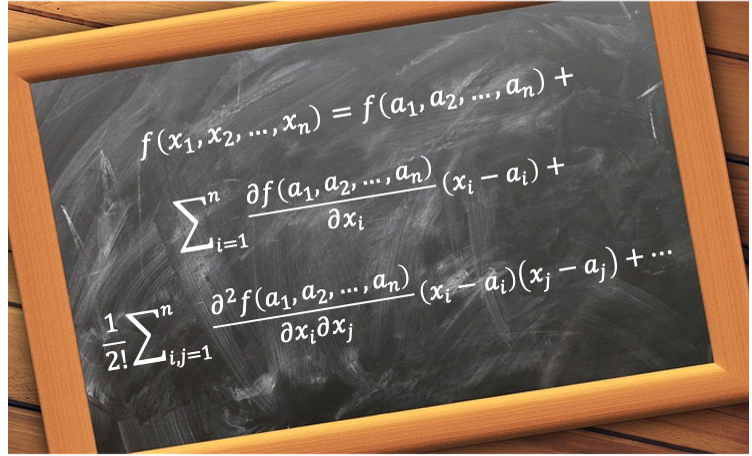The Taylor series is a way to express a function as an infinite sum of terms, each of which is derived from the function’s derivative value at a specific point .

Consider the power series . We have
,
,
,
and so on. Therefore,
Eq32b is called a Taylor series, which approximates a function in the neighbourhood of the point . When
, the Taylor series is also known as a Maclaurin series:
The input value of
in eq32b represents points in the domain of
that are near
. In other words, we can express
as
, where
is a constant,
is a variable, and
represents a small change in
that is scaled by
. This alternate expression of
is useful when dealing with multiple-variable functions.
For a multivariable function , the Taylor series about the point
is

Question
How do we use vector notation to express the function ?
Answer
If we let , then we write
in place of
. In other words, we have
, where
. Consequently,
can be regarded as
-
- a function of
variables
,
- a function of a single point variable
, or
- a function of a single vector variable
.
- a function of
To derive eq32c, let and
. Consider the function
which implies that .
is a multivariable function, whose input is the vector
, which varies with
. In the domain of
,
is the vector representing a point where
is expanded, and
is a fixed vector that determines the direction of the displacement from the point
. In other words,
is not a variable of
, but a parameter that we choose before plotting
. The function
is therefore a single variable function of
, and its points are of the form
.
The Maclaurin series expansion of when
is
According to the multivariable chain rule, , where
and
. So,
The second derivative is
Using the multivariable chain rule again, we get
With reference to eq32d, with components
. It follows that
,
and
. Eq32g becomes
Furthermore, when , we have
. So, eq32f and eq32h become
and
respectively.
Substituting eq32i and eq32j in eq32e and noting that and
, we have eq32c. Finally, the Maclaurin series of a multivariable function is